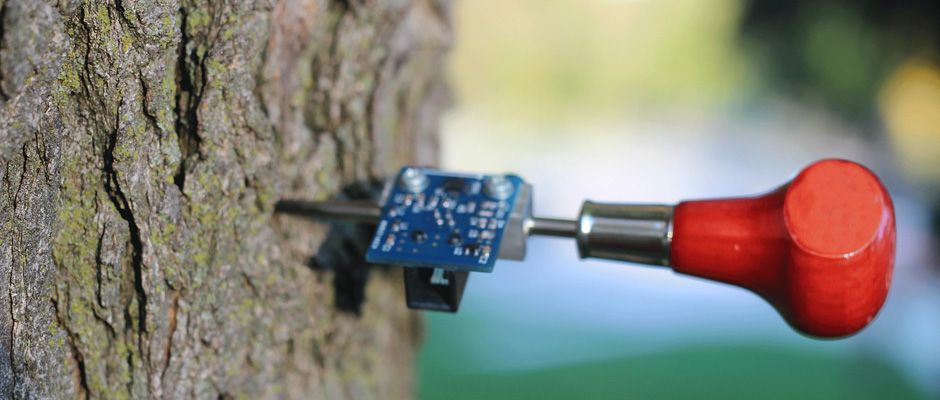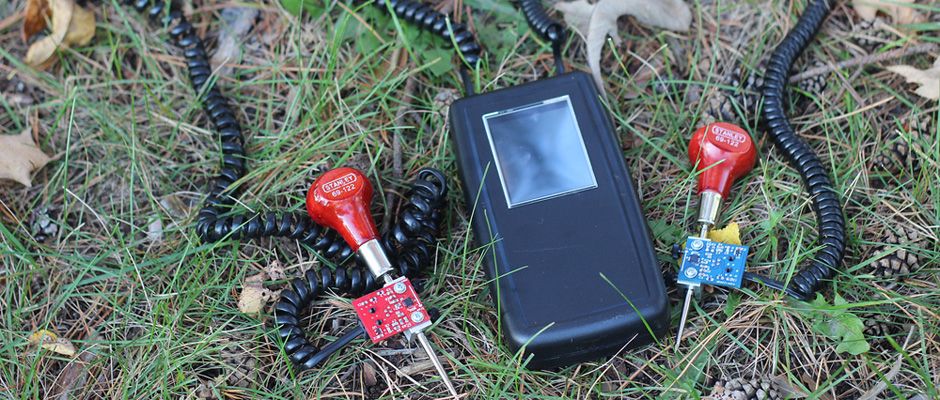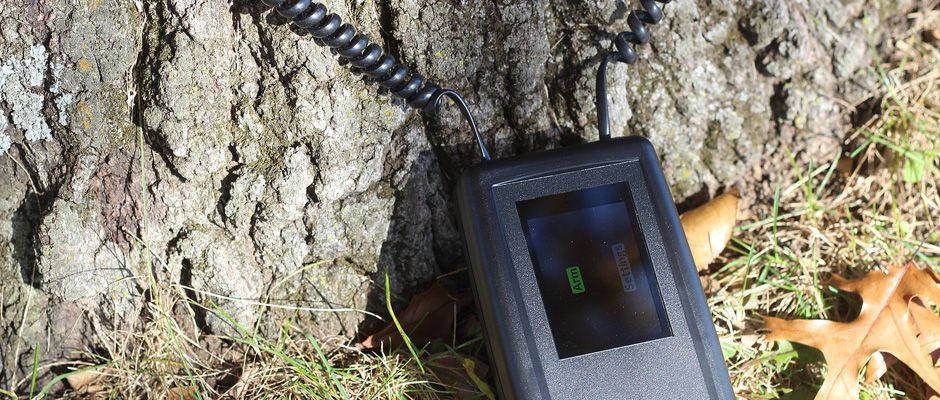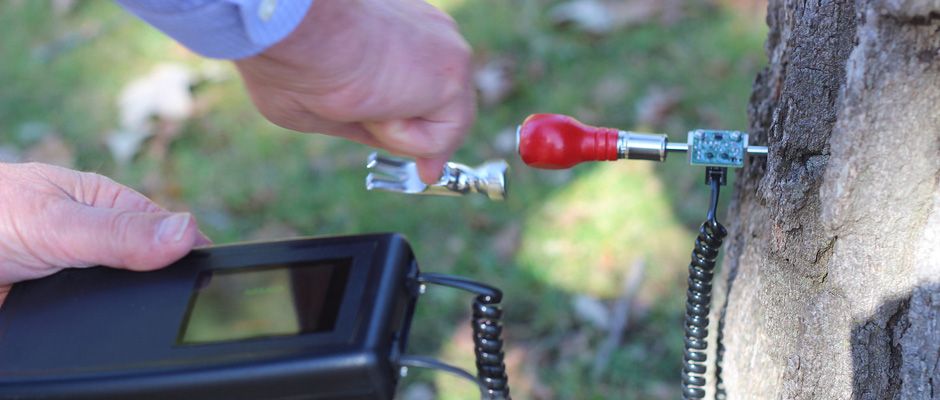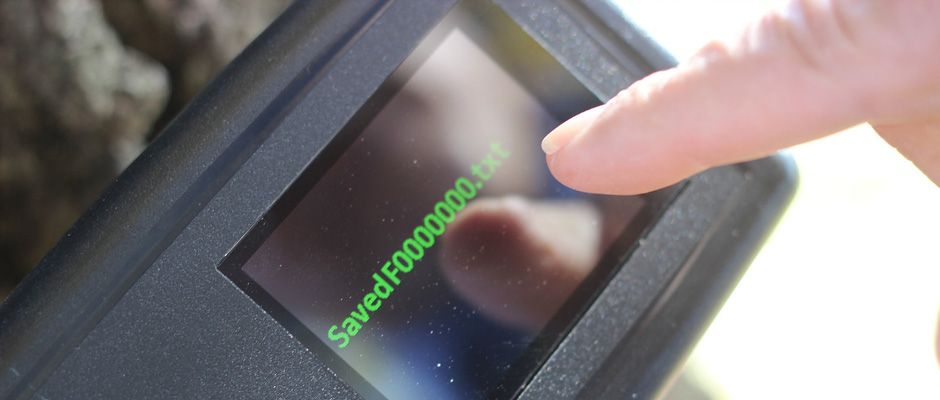HOW IT WORKS
Tree Check is designed for arborists and urban foresters as a low cost, simple to use, reliable field tool to detect the likely presence of significant decay, cavity or cracks in standing trees. Used properly it can “see inside the tree” revealing areas of concealed severe deterioration that undiscovered could result in tree structural failure and resultant property damage or personal injury.
The tool consists of two sensors that are connected to an electronic circuit board box by simple telephone cables. The sensors are secured with setscrews on carpenter’s awls that penetrate through the bark and slightly into the tree wood on opposite sides of the trunk. After turning on the device, the user taps the start sensor awl with a light hammer creating a sonic or stress wave traveling through the trunk and at the same time creating an electronic signal to the circuit board box starting the “stop watch” timer.
When the leading edge of the sonic wave arrives at the opposite sensor, it creates an electronic signal to stop the timer. The circuit board box displays both the wave transit time in microseconds and a graphic representation of the waveform itself. The user measures the distance between the sensors, calculates the transit time per inch or centimeter comparing it to an expected transit time for defect-free wood of that species. Longer than expected transit times can be an indication that the sound wave movement was obstructed by internal decay, cavity or cracks.
THE SCIENCE BEHIND TREE CHECK
The science behind its operation is simple and well researched. The tool measures the time it takes for an impact-induced stress wave to travel from one sensor to another across the diameter of a trunk or large limb. Defects such as decay, cavities and cracks create obstacles requiring the wave to bypass the defect thus taking more time than a wave moving directly through defect-free wood between sensors. Average transit times across defect-free wood varies by tree species. Published tables with transit time’s normal range and average reference numbers for select species can be found in the attached USDA Forest Service bulletin Assessment of Decay in Standing Timber Using Stress Wave Timing Nondestructive Evaluation Tools: A Guide for Use and Interpretation.
Normal defect-free wave transit times are largely influenced by wood density and the manufacture of the instrument, but moisture, growing conditions and temperature also influence transit times. Ideally one would make a reference check for comparison on a known defect free part of the subject tree or a same species tree growing nearby.
| Material | microseconds/inch | microseconds/cm | Example |
|---|---|---|---|
| Hardwood | 22 | 9 | oak, hickory, walnut, beech, ash, locust, sugar maple, |
| Softwood | 25 | 10 | pine, fir, spruce, larch, boxelder, silver maple |
| Very soft wood | 30 | 12 | cottonwood poplar, willow |
SUPPORT
Wang, Xiping; Divos, Ferenc; et al. 2004.
Assessment of decay in standing timber using stress wave timing nondestructive evaluation tools – a guide for use and interpretation.
Gen. Tech. Report FPL-GTR-147. Madison, WI : U.S. Department of Agriculture, Forest Service, Forest Products Laboratory.
Mattheck, Claus; Bethge, K.A. 1993.
Detection of decay in trees using the Metriguard stress wave timer.
Journal of Arboriculture 19(6): p.374-378
Allison, R. Bruce. 2016.
Tree check sonic wave tree decay detector – a new tool to make the arborist and urban forest safer.
The Wisconsin Arborist 35(3); p 1
Allison, R. Bruce; Wang, Xiping. 2015.
Nondestructive testing in the urban forest. Chapter 7 in Nondestructive evaluation of wood, second edition.
Robert J Ross (ed) General Technical Report FPL-GTR-238 Madison, WI. US Department of Agriculture, Forest Service, Forest Products Laboratory: p. 77-86
Ross, R.J.; Wang, X.; Rudnicki, M. 2017. New technologies aid in assessing trees. The Forestry Source 22:2:22-23. Society of American Foresters.




